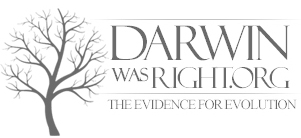
Genetic Recombination
Genetic recombination is catalyzed by many different enzymes, called recombinases. RecA, the chief recombinase found in Escherichia coli, is responsible for the repair of DNA double strand breaks (DSBs). In yeast and other eukaryotic organisms there are two recombinases required for repairing DSBs. The RAD51 protein is required for mitotic and meiotic recombination, whereas the DMC1 protein is specific to meiotic recombination.
Chromosomal Crossover

Chromosomal crossover refers to recombination between the paired chromosomes inherited from each of one’s parents, generally occurring during meiosis. During prophase I the four available chromatids are in tight formation with one another. While in this formation, homologous sites on two chromatids can mesh with one another, and may exchange genetic information.
Because recombination can occur with small probability at any location along chromosome, the frequency of recombination between two locations depends on their distance. Therefore, for genes sufficiently distant on the same chromosome the amount of crossover is high enough to destroy the correlation between alleles.
Tracking the movement of genes during crossovers has proven quite useful to geneticists. Because two genes that are close together are less likely to become separated than genes that are farther apart, geneticists can deduce roughly how far apart two genes are on a chromosome if they know the frequency of the crossovers. Geneticists can also use this method to infer the presence of certain genes. Genes that typically stay together during recombination are said to be linked. One gene in a linked pair can sometimes be used as a marker to deduce the presence of another gene. This is typically used in order to detect the presence of a disease-causing gene.
Gene Conversion
Evolution of Sexual Reproduction

It seems that a sexual cycle is maintained because it improves the quality of progeny (fitness), despite reducing the overall number of offspring (the two-fold cost of sex). In order for sex to be evolutionarily advantageous, it must be associated with a significant increase in the fitness of offspring. One of the most widely accepted explanations for the advantage of sex lies in the creation of genetic variation. Another explanation is based on two molecular advantages. First is the advantage of recombinational DNA repair (promoted during meiosis because homologous chromosomes pair at that time), and second is the advantage of complementation (also known as hybrid vigor, heterosis or masking of mutations).
For the advantage due to creation of genetic variation, there are three possible reasons this might happen. First, sexual reproduction can bring together two mutations that are beneficial into the same individual (i.e. sex aids in the spread of advantageous traits). Also, the necessary mutations do not have to have occurred one after another in a single line of descendants. Second, sex acts to bring together currently deleterious mutations to create severely unfit individuals that are then eliminated from the population (i.e. sex aids in the removal of deleterious genes). However in organisms containing only one chromosome, deleterious mutations would be eliminated immediately: therefore removal of harmful mutations is an unlikely benefit for sexual reproduction. Lastly, sex creates new gene combinations that may be more fit than previously existing ones, or may simply lead to reduced competition among relatives.
For the advantage due to DNA repair, there is an immediate large benefit to removal of DNA damage by recombinational DNA repair during meiosis, since this removal allows greater survival of progeny with undamaged DNA. The advantage of complementation to each sexual partner is avoidance of the bad effects of their deleterious recessive genes in progeny by the masking effect of normal dominant genes contributed by the other partner.
The classes of hypotheses based on the creation of variation are further broken down below. It is important to realise that any number of these hypotheses may be true in any given species (they are not mutually exclusive), and that different hypotheses may apply in different species. However, a research framework based on creation of variation has yet to be found that allows one to determine whether the reason for sex is universal for all sexual species, and, if not, which mechanism is acting in each species.
On the other hand, the maintenance of sex based on DNA repair and complementation applies widely to all sexual species.
Radding C (1982). “Homologous pairing and strand exchange in genetic recombination”. Annu. Rev. Genet. 16 (1): 405–37. doi:10.1146/annurev.ge.16.120182.002201. PMID 6297377.
Agrawal AF (2006). “Evolution of sex: why do organisms shuffle their genotypes?”. Curr. Biol. 16 (17): R696. doi:10.1016/j.cub.2006.07.063. PMID 16950096
Alberts, Bruce (2002). Molecular Biology of the Cell, Fourth Edition. New York: Garland Science. ISBN 978-0-8153-3218-3.
“Access Excellence”. Crossing-over: Genetic Recombination. The National Health Museum Resource Center. Retrieved February 23, 2011.
Stacey, K. A. 1994. Recombination. In: Kendrew John, Lawrence Eleanor (eds.). The Encyclopedia of Molecular Biology. Oxford: Blackwell Science, 945–950
Letunic, I; Bork, P (2006). “Interactive Tree of Life”. Retrieved 23 July 2011.
Letunic, I; Bork, P (2007). “Interactive Tree of Life (iTOL): An online tool for phylogenetic tree display and annotation”. Bioinformatics 23 (1): 127–8. doi:10.1093/bioinformatics/btl529. PMID 17050570.
Letunic, I; Bork, P (2011). “Interactive Tree of Life v2: Online annotation and display of phylogenetic trees made easy”. Nucleic Acids Research 39: W475–8. doi:10.1093/nar/gkr201. PMC 3125724. PMID 21470960.
